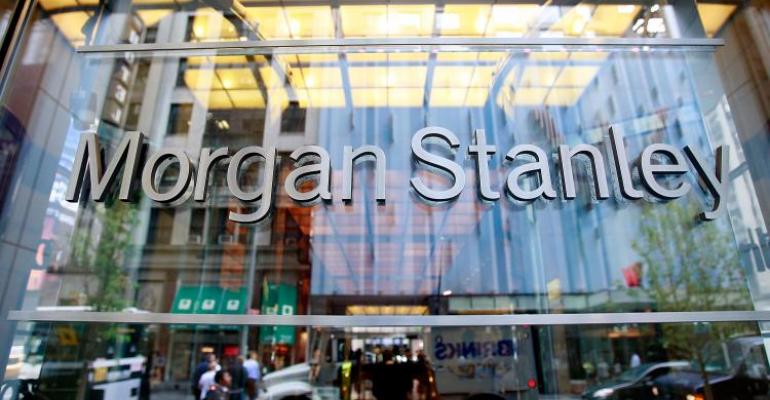Morgan Stanley Wealth Management is eyeing the employees of the more than 1,000 companies it provides retirement accounts and stock options to, as plan sponsors seek ways to help improve their employees’ overall financial health.
Plan sponsors are most interested in reducing the administrative burden and minimizing their fiduciary risk of offering 401(k) plans and other benefits, according to one recent study. But they also want to improve participation in their plans and help employees manage their finances, said Edward O’Connor, head of Morgan Stanley Financial Wellness and Corporate Retirement, which are part of the wealth management division that manages more than $2.4 trillion of private and institutional wealth.
In response, the division has made improvements to its Financial Wellness Program for plan sponsor employees. Along with a new online portal, employees now have access to a 12-questions assessment tool that scores employees on their financial well-being.
Based on that score, Morgan Stanley then recommends relevant articles, from a library of more than 80 by the firm, pre-recorded webinars and calculators. All of the content and tools were created by Morgan Stanley and cover personal finance topics like retirement, investing, college planning, estate planning and taxes.
O’Connor said the goal of the assessment is not to show employees how well or poorly they’re managing their finances rather to narrow what each one should specifically focus on and improve the likelihood that they act on it. Budgeting and debt management are topics that have shown to be especially important to employees as some plan sponsors tested the new program leading up to the broader launch this week, he said.
“I think we’re very much ahead of the game,” O’Connor said about the new Financial Wellness Program, citing the breadth of resources and experts at Morgan Stanley behind it and the recommendations.
The wealth manager also collects assessment results and delivers feedback which plan sponsors can use to improve their offerings to employees, which adds value to Morgan Stanley’s Corporate Solutions business.
Employees seeking advice and services beyond the assessment and their company benefits will also have an easier time engaging Morgan Stanley’s advisors or Morgan Stanley Access Investing, the firm’s online investing platform. Access Investing, a robo advisor that costs a fraction of a traditional advisory relationship at 0.35 percent, has an account minimum of only $5,000, which is well below the minimum amount of investable assets most human advisors require before they will consider accepting them as a client.
The changes to the wellness program should improve the pipeline of plan sponsor employees to the private wealth management business but it’s hard to quantify how many will become clients. O’Connor said Morgan Stanley has no official measure for how many become clients and stressed that extending wealth management services to employees was about strengthening relationships with plan sponsors and winning business from new ones.
Although, wealth managers are making a push to capture more wallet share with existing clients.
UBS made changes to its 2018 compensation plan to encourage advisors to bring in more net new money from their clients. Andy Sieg, head of Merrill Lynch Wealth Management, told attendees during a presentation at the Barclays Global Financial Services Conference in September that referrals from Bank of America were playing an increasing role in the future of the brokerage.
Morgan Stanley’s network of more than 15,600 advisors can also offer clients cash management and lending products and services in addition to investment management, financial planning and other services commonly associated with wealth management.
“When it comes to householding, Morgan Stanley’s strategy is to add the $2 trillion in held away assets of its existing clients, and it’s using a suite of tools to help its clients, from Yodlee for account aggregation and its simple planning tools, to Aladdin from BlackRock for risk management, and LifeYield for complex tax management,” Jack Sharry, executive vice president and chief marketing officer at LifeYield said during a technology roundtable at WealthManagement.com’s annual industry awards in September.





